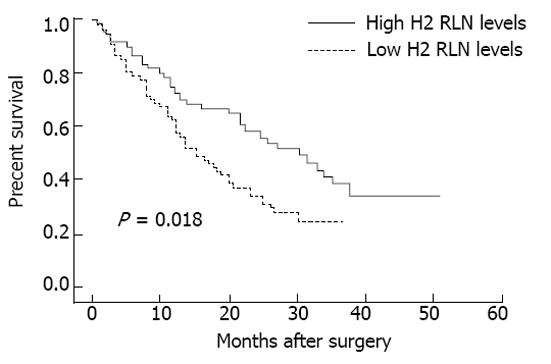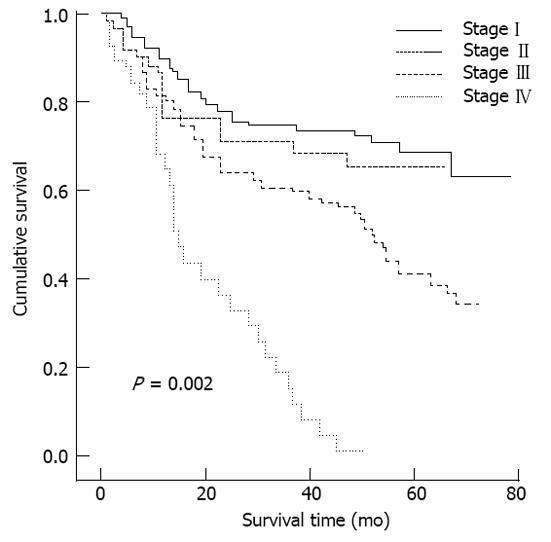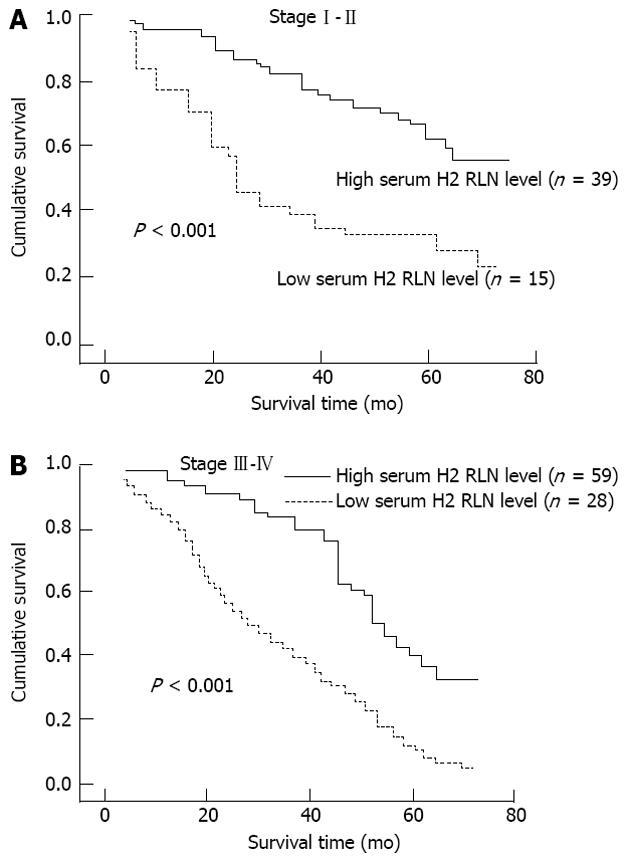Copyright
©2013 Baishideng Publishing Group Co.
World J Gastroenterol. Apr 21, 2013; 19(15): 2412-2418
Published online Apr 21, 2013. doi: 10.3748/wjg.v19.i15.2412
Published online Apr 21, 2013. doi: 10.3748/wjg.v19.i15.2412
Figure 1 Survival of patients with esophageal squamous cell carcinoma in relation to their serum human relaxin 2 levels.
The cutoff value of serum human relaxin 2 (H2 RLN) concentration for dividing patients into groups A and B was defined as 0. 462 ng/mL which represents the mean plus 1 SD measured from the healthy control subjects. Survival analysis between group A (H2 RLN, ≥ 0.462 ng/mL) and group B (H2 RLN, < 0.462 ng/mL) was assessed using the Kaplan-Meier method, and the survival difference between the groups was compared using the log rank test (P = 0.018).
Figure 2 Comparison of overall survival between different disease stages.
We also analyzed the prognostic value of human relaxin 2 (H2 RLN) levels in selected patient subgroups stratified according to disease stage. Esophageal squamous cell carcinoma patients with elevated H2 RLN levels had a significantly shorter overall survival rate compared to patients with non-elevated H2 RLN levels in the clinical stage I-II subgroup (n = 54; log-rank P < 0.001; Figure 3A), and the clinical stage III-IV subgroup (n = 87; log-rank P < 0.001; Figure 3B).
Figure 3 Overall survival curves for patients with esophageal squamous cell carcinoma after curative resection.
The patients were categorized with elevated (≥ 0.462 ng/mL) or non-elevated (< 0.462 ng/mL) levels of relaxin. P values were determined using the log rank test. A: Clinical stage I-II subgroup; B: Clinical stage III-IV subgroup.
- Citation: Ren P, Yu ZT, Xiu L, Wang M, Liu HM. Elevated serum levels of human relaxin-2 in patients with esophageal squamous cell carcinoma. World J Gastroenterol 2013; 19(15): 2412-2418
- URL: https://www.wjgnet.com/1007-9327/full/v19/i15/2412.htm
- DOI: https://dx.doi.org/10.3748/wjg.v19.i15.2412











